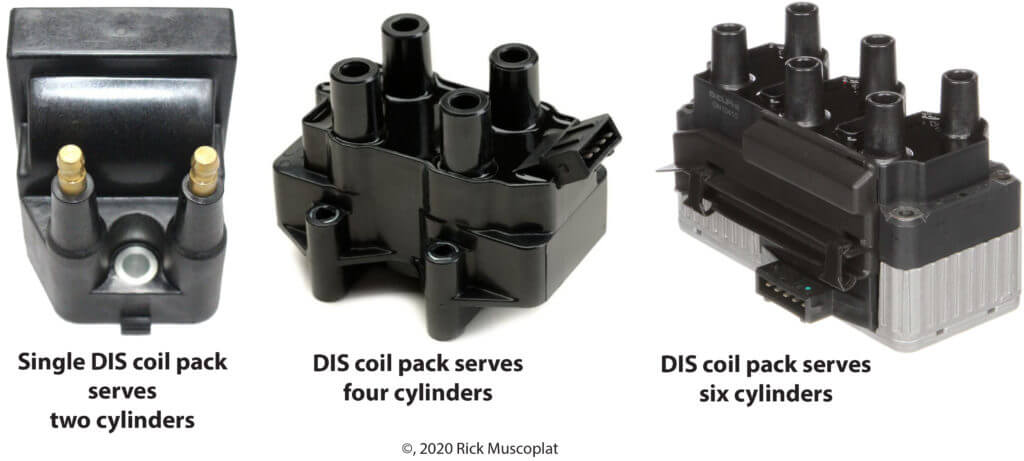Distributorless Ignition System (DIS)
Distributorless Ignition System (DIS)
A distributorless ignition system replaces traditional distributor ignition systems. The main advantage of this type of ignition system over a distributor system is that it allows a longer coil “dwell” time which boosts voltage, creating a hotter spark. The higher voltage and hotter spark help ignite leaner fuel mixtures used in lower emissions engines.
Distributorless ignition system components
DIS ignition systems use one ignition coil for every two cylinders. The ignition coil may be designed as a separate unit, called a coil pack or may be built as several ignition coils integrated into a single unit. When configured with individual coils, a repair can be as simple as replacing just the bad coil pack. However, when configured as a single ignition unit, the failure of one coil in the pack requires the replacement of the entire unit.

How a DIS ignition system works
The ignition module receives camshaft rotation data from the camshaft position sensor. Just like in a distributor system, the camshaft position data is used to calculate when to disconnect power to the ignition coil. When the ignition coil is powered it creates a strong magnetic field. When the power is shut off, the magnetic field collapses, creating a high voltage that flows to the spark plug and jumps the gap to create ignition. and the generation of high voltage to create the spark. In a traditional distributor ignition system, a single ignition coil generates the magnetic field and spark. The length of the coil on time is referred to as dwell. Since the coil must serve all cylinders, the dwell time is short especially at higher RPMs.
Since a DIS system uses multiple ignition coils, each coil can remain powered for longer periods. The longer dwell time creates a more powerful magnetic field, which in turn, provides a higher voltage and hotter spark.
Once the power is shut off to a DIS coil, the field collapses and the spark jumps from the spark plug center electrode to the side electrode in the firing cylinder, causing the fuel mixture to ignite. The return electrical path is through the spark plug in the partner cylinder where the spark jumps from the side electrode to the center electrode, up through the partner’s cylinder spark plug tower and back to the ignition coil. The spark that occurs in the partner cylinder is referred to as a “waste spark” since it doesn’t ignite any fuel.
©, 2020 Rick Muscoplat
Posted on by Rick Muscoplat